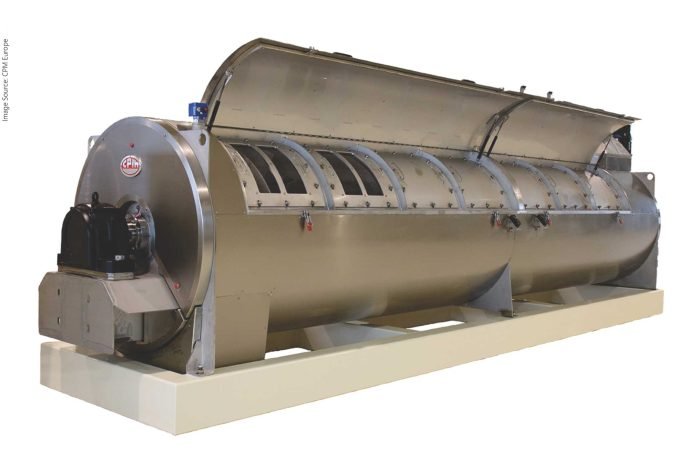

Numerous factors impact the feed process, from diet formulation, pelleting conditioning, and specific pellet mill components. Pathogen control procedures, such as heat treatments, should be ordered, as appropriate, and monitored applicable steps in the manufacturing process.
Heat Treatment- Basics:
Heat treatment is an important process used in animal feed pelleting systems to improve the nutritional value, safety, and quality of feed pellets. The process involves exposing the feed ingredients to high temperatures for a certain period, which helps to eliminate pathogens, pests, and other contaminants. It also improves the digestibility of the feed, reduces the risk of spoilage, and extends the shelf life of the feed pellets.
In addition, heat treatment helps to improve the palatability of the feed pellets. This is because heat treatment helps to break down the cell walls of the feed ingredients, making them more easily digestible for the animals. This can result in improved feed conversion rates, as the animals are able to absorb more of the nutrients from the feed.
Overall, heat treatment is an important process in animal feed pelleting systems, as it helps to ensure that the feed pellets are safe, nutritious, and of high quality. The main objective of the heat treatment is to maximize the security against salmonella/ bacterial content
By a combination of process parameters as below, one can achieve control
- Product heated to 85⁰C
- Product retention time between 2 and 6 minutes
- All product particles receiving the same treatment
(First in, first out product flow)
It also adds value to your process
- To lubricate for a faster production rate.
- To lubricate to extend die life.
- To lubricate to reduce energy costs.
- To gelatinize starch for nutritional value.
So, the whole concept is to reduce friction. Friction is the difference in temperature between the feed entering the pellet mill die and the pellet being discharged from the die. The difference reflects the mechanical energy required to produce a pellet.
There are several inherent factors that can affect friction:
1. Moisture addition to the feed ingredients (refer to Graph #1).


The amount of moisture(steam and/or wet molasses and/or water) added should cease when the friction plateaus. Moisture added beyond this point will cause the pellets to disintegrate and not increase production or quality.
2. Ground screen size of feed ingredients.
3. Physical properties of the feed ingredients, such as minerals, water-soluble ingredients, and fiber content.
Other factors relating to friction are die size in terms of hole diameter and thickness. High friction (over 30°F) results in reduced die and roller life, as well as increased bearing and gear maintenance.
Fines are the materials that result from pellets disintegrating due to poor quality or mechanicalattrition. Fines are a function of the moisture and high friction (see Graph #1) or oversized feeding redient particles or poor conditioning.
Shrinkage is the loss of weight of the original feed ingredient after pelleting. This loss is basically due to a lack of moisture addition and high friction (refer to Graph #2).
High levels of friction due to lack of moisture addition results in higher pellet temperature entering the cooler, and thus, more moisture is “flashed off”.
Basically, the break-even point is 2% moisture addition; therefore, anything less than 2% moisture addition results in shrinkage. On the other hand, over 2% moisture addition will result in a gain.


A common concept of hygieniser is based on the application of heat and steam to kill off pathogens, pests, and other contaminants in the feed ingredients. This helps to ensure that the feed is safe and free from harmful substances and that the animals are not exposed to any diseases. Overall, the concept of a hygieniser is an important one in feed conditioning, as it helps to ensure that the feed is safe, nutritious, and of high quality.
Shown below is the diagrammatic representation for the placement of hygieniser along with the press feeder in a pelleting system. The design concept must address bothlong-term hygienisation and consistent inflow into the pelleting chamber.
In conclusion, there are numerous processing parameters that can influence the pelleting process and product quality. There is always an added cost and processing step to pelleting diets, the payout can be seen in performance if pellet quality is upheld. Factors such as formulation, equipment design, and manufacturing parameters do determine pellet quality but also mill production rate, energy consumption, and operational effectiveness at the minimum.


Recent news on Aflatoxin detected in milk samples
The hepatotoxin in milk is a direct result of dairy animals being given contaminated feed. According to literature, Aflatoxin contamination of grains, seeds, spices, and edible nuts is most prevalent in warm, humid regions of the world where conditions are favorable for the growth of mould.
by Joseph Sebastian, CPM (California Pellet Mill)















